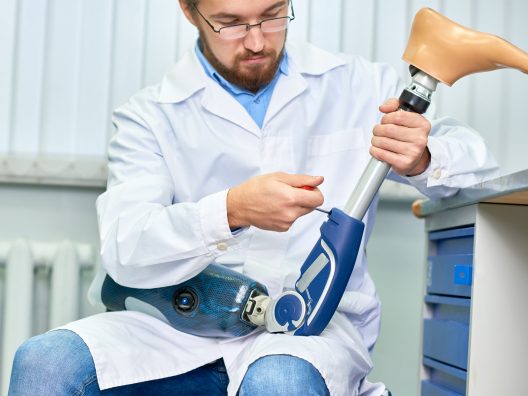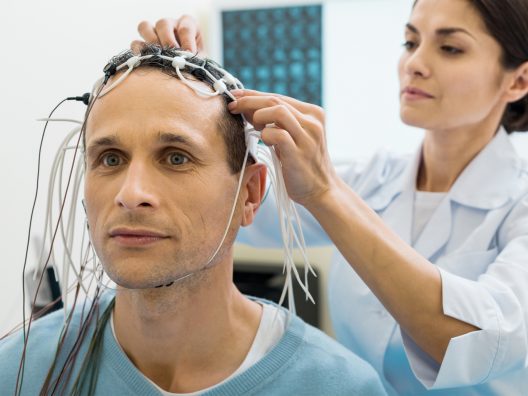MEDICINE
Wool felts are gentle on the skin, easy to work with, elastic and thus easy to deform. As a result, orthopaedic technology already started to make use of felt as a material decades ago. Felt and leather can also be used – along with carbon and thermoplastics such as neoprene – as cushioning in ortheses and protheses to ensure good wearing comfort.
Not every human has the same shape, and walking aids, wheeled walking frames and wheelchairs often have to be adapted here and there to the individual needs of patients.
Hand and foot protheses/ortheses
Felt is used as a filling material and support on protheses and other orthopaedic products in order to improve comfort for patients or to protect body parts. The advantages of felt are that it has excellent dermatological compatibility and can absorb perspiration.
more fewerShoe inlays
When used on inlay soles, felt ensures good wearing comfort. These inlays keep your feet warm in winter, while they absorb perspiration in summer which means that the wearer’s feet start to become sweaty much more slowly. Special inlays are also available that provide cushioning in the case of exarticulation of toes. (can also be made of cork or neoprene).
more fewerFelt disks as covers for EEG electrodes
Our felt disks serve as electrode covers that protect medical electrodes against damage and can absorb saline solution or conductive electrode gel. In this way, the felt disks ensure optimal contact between the EEG electrodes and the patient’s skin.
more fewer


